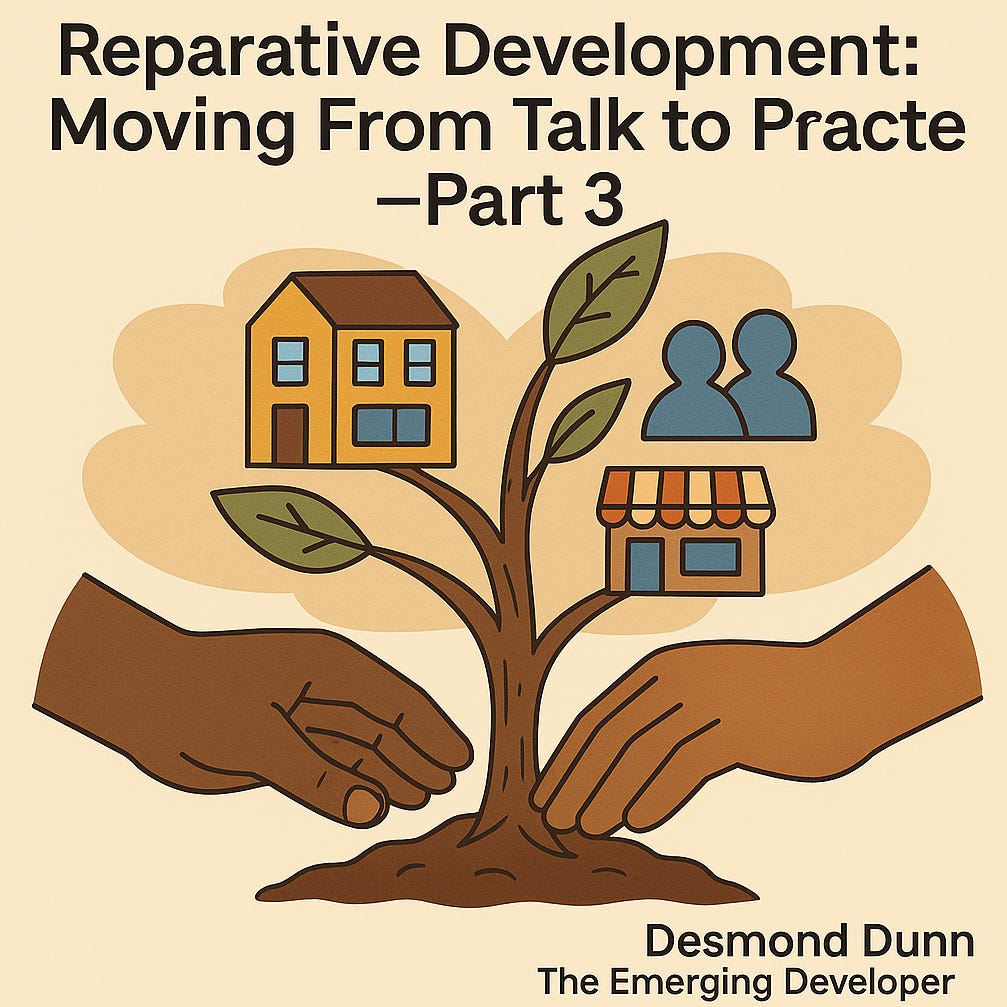Over the past two weeks, I’ve explored what reparative development could look like and the barriers that keep us from moving from vision to practice.
Part 1 was about ideas.
Part 2 was about responsibility.
This final piece is about commitment.
Because repair doesn’t happen with one policy, one grant, or one well-meaning project. It happens through a sustained, generational shift in how we approach housing and development.
Why Commitment Matters
The harm we are trying to repair wasn’t a one-time event. It wasn’t just one highway project or one denied mortgage. It was decades of compounded decisions: redlining maps drawn by hand, urban renewal programs that bulldozed thriving neighborhoods, predatory lending that stripped equity, and disinvestment that let infrastructure rot.
If harm was deliberate and sustained, repair must be the same.
This is where commitment matters most. Because short-term fixes, ribbon cuttings, one-off programs, or pilot funds, may make headlines, but they don’t rebuild ecosystems. What was lost over generations requires generational repair.
That means long-term capital, multi-decade land strategies, and policies that endure past election cycles. It means being honest that the real fruits of reparative development may not be fully visible for years, but laying the foundation anyway.
What Long-Term Repair Looks Like
To move from talk to practice, we need systems that embed repair into the DNA of city-building.
Institutionalized Funding. Dedicated revenue streams, cannabis taxes, vacancy fees, land value capture, that replenish annually, immune to political winds.
Permanent Land Stewardship. Community land trusts and cooperative ownership models that keep affordability and equity locked in place for the next generation.
Policy Anchors. First-right-to-purchase laws, legacy resident tax relief, and anti-displacement measures written into city code, not just pilot programs.
Talent Pipelines. Investing in emerging Black and Brown developers, architects, and planners who will carry this work forward long after today’s projects are complete.
Repair is not a project. It’s a system.
The Human Side of Repair
We can’t forget: reparative development is not only about economics. It’s about dignity.
When families are given the chance to return to the neighborhoods they were forced out of, it restores more than a property line. It restores belonging.
When legacy residents can age in place without the fear of displacement, it builds stability.
When children grow up in communities that honor their history instead of erasing it, it nurtures pride and possibility.
This is the heart of reparative development. It’s not just about closing a wealth gap. It’s about repairing the social fabric that was intentionally torn.
A Vision Forward
If Part 1 was about ideas and Part 2 was about responsibility, Part 3 is about endurance.
We cannot let reparative development remain a buzzword or a pilot program. It has to become a framework cities adopt as standard practice, baked into budgets, policies, and development processes.
Cities once engineered exclusion. They can engineer repair. But it won’t happen in a single budget cycle. It requires us to think in decades, not years.
Because the harm was intentional and sustained. The repair must be intentional and sustained too.
And that’s the commitment we owe to the communities who built our cities long before bulldozers and red lines.
What’s one long-term strategy your city could adopt to make reparative development real for the next generation?


